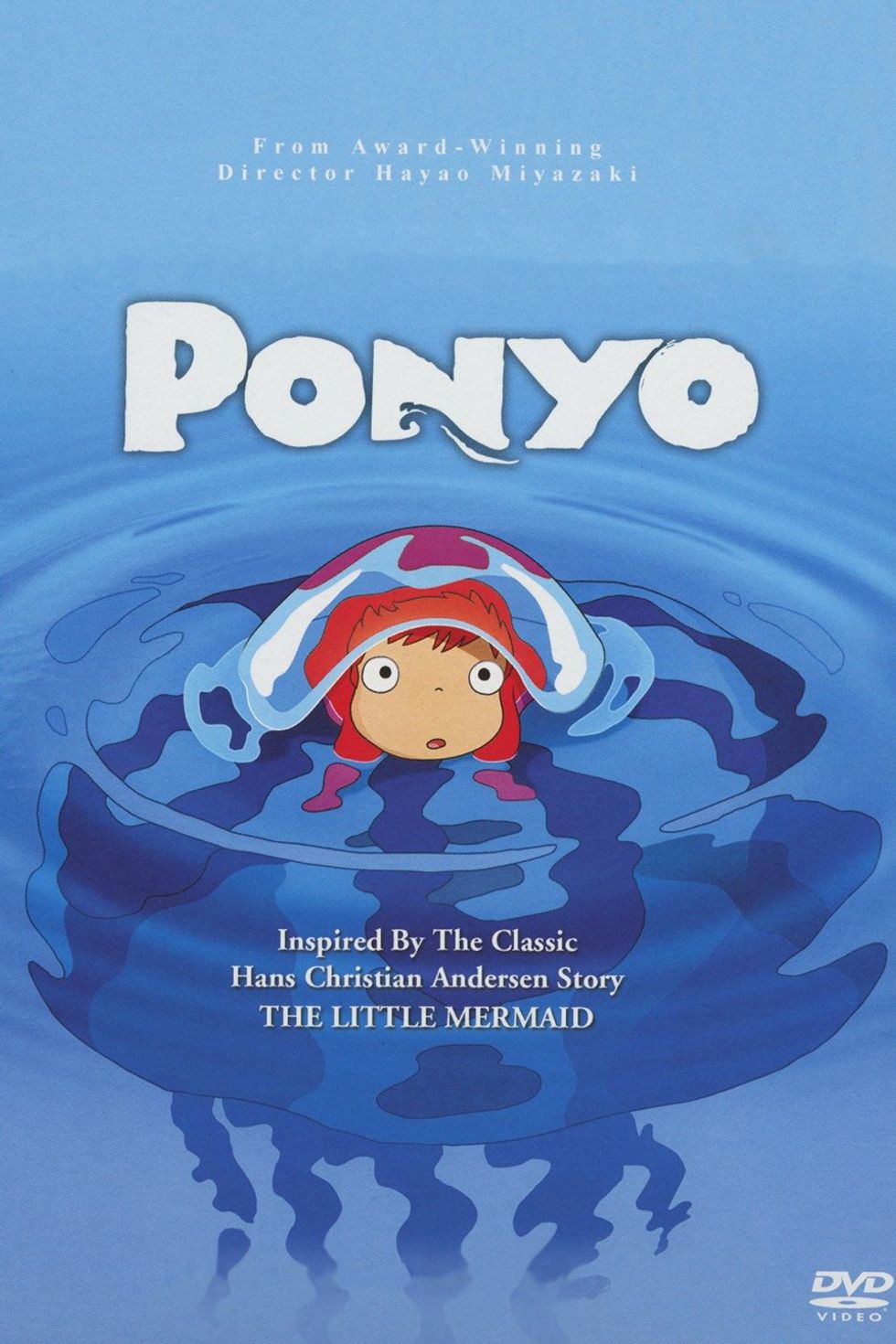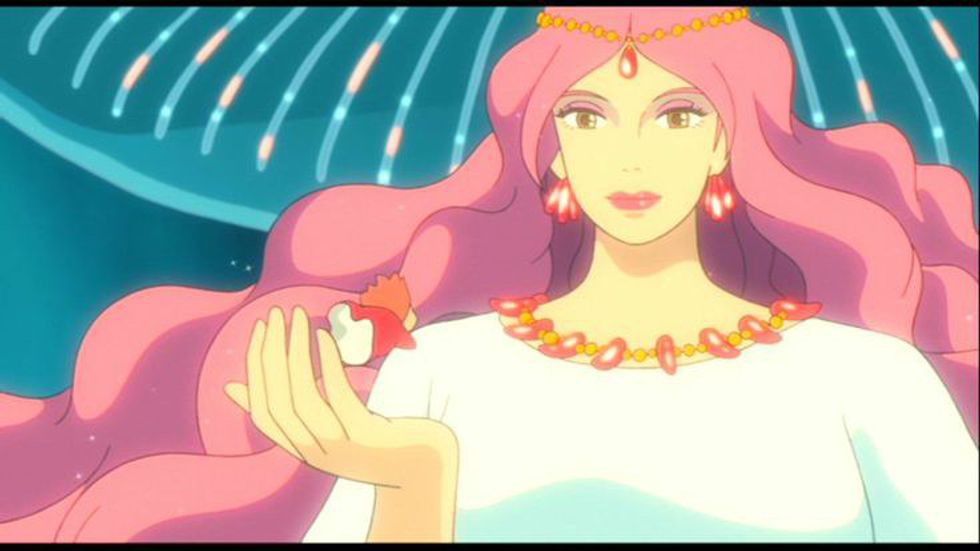Not unlike many other members of my generation that were born in the midst of the Disney Renaissance, I was consistently subjected to a litany of films pertaining to princesses, talking animals, and grossly inaccurate accounts of history. "I Just Can't Wait to be King" and "Under the Sea" became the soundtracks to the annual, family vacations, wherein my brother and I would screech along with the lyrics until our parents began to regret their decision to buy the albums. In fact, the very first film that I ever viewed within a movie theater was The Little Mermaid during its re-release in the late nineties, and boy, I was obsessed. I dressed as Ariel for Halloween that year, and I had garnered quite the collection of dolls from the franchise by the time Christmas arrived. If I were to tally the total number of times that I've viewed The Little Mermaid in my twenty years of life, it would probably be within the triple digits. In short, it was the bread and butter of my childhood.
Naturally, as time progressed and my fascination with classic literature began to flourish, I found a copy of the original, Hans Christian Andersen tale, wherein poor, dejected Ariel does not receive her true love's kiss, her sister's implore her to murder the prince, and she, eventually, ceases to live as a physical being, doomed to float throughout eternity (well, three-hundred years, anyway). Andersen's tale explains that a mermaid's "eternal existence depends on the power of another," and thus began my skepticism towards this piece of fiction, both the film and the original text (99). Neither version of the story seems content with letting Ariel exist as her own being outside of romantic infatuation, nor does either text present strong, female role models for the young protagonist. Both versions of Ariel's father appear confused as to how to handle her, and Ariel's sisters, while meaning well, play little to no part in actual events that unfold.
Enter 2009 and the English language release of Hayao Miyazaki's "Ponyo," and while much of the story is remarkably original, the source text is very clearly Andersen-ridden. For instance, Ponyo's story begins after she takes a forbidden trip the ocean's surface, wherein she falls in love with a human boy. If Sosuke's love for Ponyo isn't true, Ponyo will turn into "sea foam," as well, just like the classic, Danish version of The Little Mermaid (Miyazaki). However, Miyazaki takes broad strides away from this source material in the ways that he has created his characters, as well as their values and motivations.
We've all heard of Ariel, but let's talk about Ponyo for a moment. While Ariel is fifteen, Ponyo is still a child, taking on the form of a tadpole-like creature at the film's beginning. When she assumes her human form, she appears to be an elementary school-aged child, which is both refreshing and terrifying, considering the hefty decision she makes within the film. Miyazaki's ability to create strong, independent characters out of fictional children has always been one of his strongest traits as a story teller, and making Ponyo so young and uninhibited makes the plotline easier to swallow. Ponyo is also responsible for creating her own human limbs, as opposed to Ariel, who has to have virtually everything done for her. This demonstrates a sense of determination and self within the former, something that is found to be lacking within the original text, as well as the Disney adaptation.
While I have little to say about the generic, insert prince in the original, and only a little more to say about Eric (You crashed your ship into a massive, obvious target. Congrats.), Sosuke presents the audience with a young man that actually knows what he is doing, which is impressive, considering the fact that the princes appear to be in their twenties, whereas Sosuke is still in single digits. His mind is incredibly un-cluttered for a child, perhaps due to his parents' somewhat rocky relationship, as well as the time that he spends alone while his mother is working at the senior center. In a way, he is forced to grow up and take responsibility, despite the fact that he is only five years old. When I was five years old, I was tricking my brother into eating bird poop and contemplating the idea of ingesting Play-Doh, not driving my own mini-boat and comforting my mother as she cried about my father's inability to keep his promises. Did I mention this kid can communicate using Morse Code? Because he can. And I'm pretty sure Eric cannot.
Both the Disney adaptation and the original, Andersen text lack mother figures, only presenting the audience with the Ursula (in the former version), who acts out of personal gain and is seen as a monster (which, yes, she's pretty heinous, but can you blame her? She got a raw deal.). In this wonderful, pseudo-adaptation from Studio Ghibli, however, we are granted with not one, but two mother figures that clearly know how to take care of business. Sosuke's mother, Lisa, is a no-nonsense woman that is able to balance raising her son (on her own, practically) and her job with the elderly. She is immediately accepting of Ponyo, and when it comes to keeping everyone safe, she does a terrific job. When she leaves Sosuke and Ponyo to take care of the seniors after the wake of the ocean flood (eruption? tsunami?), she gives a speech about courage and bravery before driving off (albeit, haphazardly) into the darkness. The male crewmen on the boats also praise Lisa, acting proud that she ventured out into the storm, though not at all surprised; it is within her nature to be daring and do whatever it takes to protect others.
Ponyo's mother, while only on screen for a few moments, is larger than life in the most positive manner. The fishermen refer to her as the "Goddess of Mercy," and while Ponyo's father is bent on keeping his daughter a sea-creature, Granmamare completely supports the idea of letting her daughter make her own decisions. When everything else is collapsing within the ocean's ecosystem, Granmamare appears to fix the mistakes that her family has made, reinforcing the ideology of mother always knowing what's best (which is debatable in other pieces of fiction).
Briefly, I want to discuss the subject of setting, and why is matters so much in the context of this type of story. As is custom for most Disney films that are based on fairy tales of European descent, The Little Mermaid is set in some non-descript pseudo-Denmark, we assume, but the titles are not directly provided in regards to the sea side kingdom itself. In Ponyo, we know this is set in a fishing village in Japan, and we know the time period due to the usage of technology. However, we can also view the setting's relation to the plot itself, especially during the beginning of the film. Shortly after Sosuke has taken Ponyo from the ocean, Ponyo's father begins racing through the harbor in his attempt to reclaim his daughter. He swims through sludge and waste, even going as far as to call the humans "filthy" and "disgusting" (Miyazaki). He wants to save Ponyo because humans are the reason that the ocean is such a wreck, something that is not difficult to believe because it's true. When Ponyo is briefly caught within the dragnet from the fishing boat, she is crammed into a glass bottle, whereas other fish struggle with their own pollution hazards. These characters interact with a realistic and awful setting that is true enough to resonate with audiences, to the point of which I'm almost positive that some people began recycling more and being more selective with their trash dumping after seeing this film. In this sense, Ghibli provides a setting that isn't static, but active in ways that better help the audience understand the creatures of the ocean, both in their desire to escape and their yearning to fix their home.
Instead of presenting audiences with characters that can only operate when dependent one another, Studio Ghibli provides a new take on a classic, warped tale of love and loss. When it comes to which film young children should view, I would most certainly give this point to Ponyo. This isn't to say that The Little Mermaid is atrocious, or that I despise Disney as a whole, because I do not. In fact, I'm still quite the enthusiastic fan of most of their films (key word: most). However, impressionable, young minds should be viewing texts that enable them, not disable them. Young girls should be taught that, if they want something badly enough, they can manifest that something (e.g. Ponyo's arms and legs), and young boys should know that not all hero's have half-open shirts and rarely-used brains. Above all else, though, is that everyone should know that love is not something exclusive to that of romantic infatuation during adolescence or adulthood. We can learn a great deal from those years behind us.



























